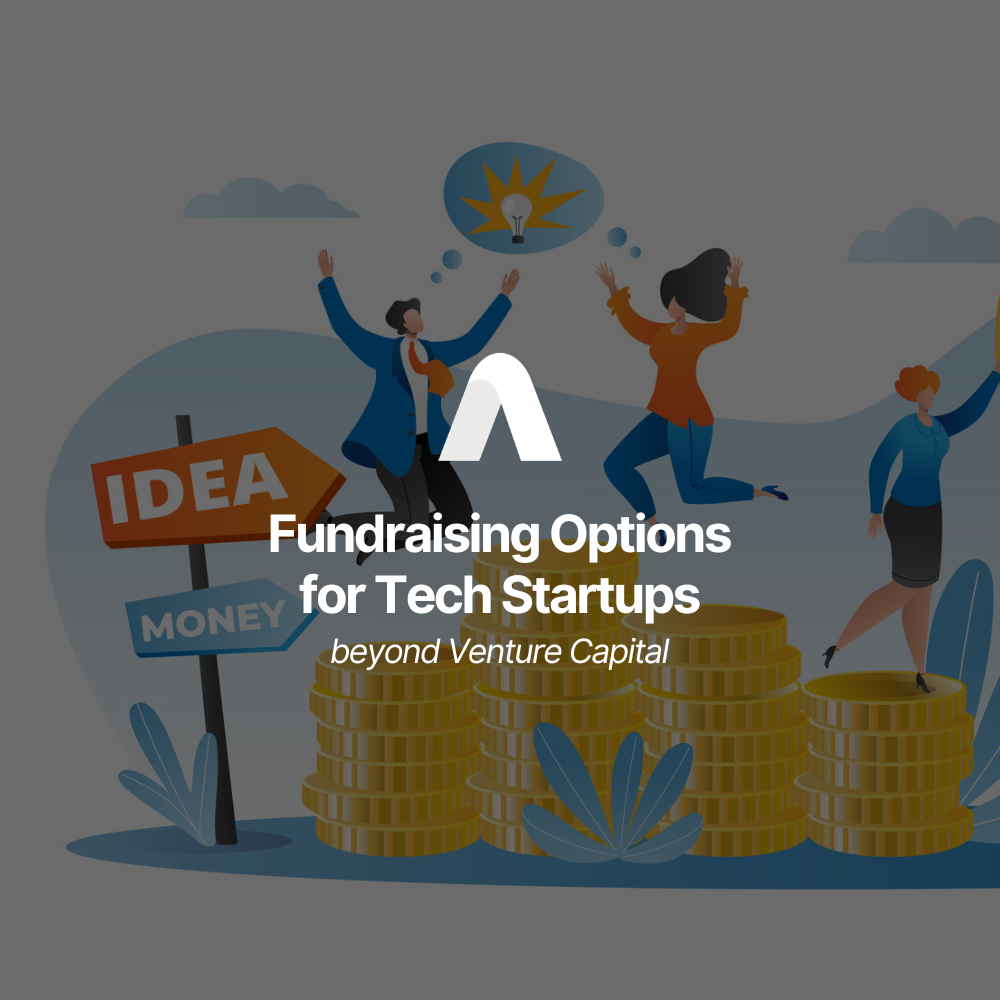by Taylor McAuliffe
As tech entrepreneurs navigate the startup environment, raising money is both a pivotal challenge and a promising opportunity.
We recently spoke to Alexander Morsink, Managing Director at Equivesto, which helps private businesses raise capital from Canadian investors. Since launching three years ago, Equivesto has helped raise over $50 million from over 4,500 investors. Alex provided insights into the intricate world of raising capital for tech startups, including the diverse stages of raising capital and strategies to propel ventures from ideation to exit.
The first step towards fund-raising is ensuring your company fits the qualifications. When you are going out to raise capital, there is a difference between a small business and startup founder. Small businesses such as a restaurant or a dry-cleaning shop, have very different motivations for starting their businesses and are typically in business for longer periods compared to startup businesses. They do not typically look to raise capital from venture capital investors.
On the other hand, startups are typically technology-driven businesses that target a large addressable market of over $1 billion. The core aspect of any startup is a unique differentiator and the ability to scale rapidly. Due to the nature of rapid scale and aggressive growth, startups need to raise capital multiple times from external professional investors.
Follow the Green Brick Road
In the Canadian capital ecosystem, there has become a standardized path that startups walk along as they grow. Alex details the five prominent growth stages and raises: The Beta Stage (Pre-Seed), The MVP Stage (Seed), The PMF Stage (Series A), The Scaling Stage (Series B) and finally, The Exit (M&A, Private Equity, IPO etc.).
The MVP Stage (Seed) is where founders first see opportunities to raise capital from external professional investors. Investments will mainly come from Angel investors as well as some other small early-stage seed investors and early-stage VCs. At this point, your company should have completed a minimum viable product that can be taken to market and sold to customers.
The focus of this round is to show that your product is scalable. Startups must demonstrate to investors that, with the right flux of capital, they can rapidly expand their revenues and the number of customers they have. However, as Alex reflects, since the market downturn, we’ve seen investors pull back their investments. As a result, many angel and early-stage investors are looking for additional growth indicators, including some initial revenue.
As a seed stage company, investors in the Angel groups will want to see revenue – even if it’s minimal revenue. They will need to see revenue generation before they really consider an investment. That’s important to keep in mind since that bar has moved.”
In a recent article with Altitude, Alex also touched on the growing opportunity for early-stage startups to engage in equity crowdfunding (ECF), especially during periods when capital feels sluggish. ECF is an alternative method of raising capital that gives startups access to funds from non-accredited investors. Startups can pull from a larger pool of investors to complete their raise.
Private companies looking to raise put themselves in the best possible position by putting fewer limitations on those who may be interested in investing…The key for these companies is to successfully raise at their earlier stages to create momentum and be on the radar for investors who may be interested in later investing rounds.”
Alex emphasizes the importance of understanding where your company stands on the growth pathway so you can get the most out of your raises. When reaching out to investors, do your homework. Make sure you understand and fit the stage, industry and investment check size in which the investor typically invests.
Investors are looking at potentially 50 – 100 deals a day, and most of the deals, pretty much all of them will fall within these stages, and they’re looking for things that make sense, they feel comfortable with, and that fits into their wheelhouse of expertise. You want to remove any barriers to your potential funding and make sure you’re fitting into this expected paradigm as well.”
Three Core Risks Facing Any Startup
When approaching investors, building your presentations and finalizing your pitch, founders must address three core risks every startup faces:
- Can you build the product?
- Are there people who want to buy this product?
- And are you the right team with the right skills to scale this business?
Investors are looking for how your company will counter these risks as you grow and scale. This is especially important during early-stage raises as your investors will take on more of these core risks. But how do early-stage companies, with little to no revenue, help ease these investor concerns? For product/market fit, Alex shares that traction can be enough to demonstrate a promising trajectory.
“You want to make sure you can demonstrate you have a lot of traction. Traction shows that you have product market fit. So even though you don’t have a million in revenue, you want to say I’ve spoken to 5000 customers and they’ve all signed up to our wait list or I’ve got 10,000 people who are on our newsletter.”
On the scale and growth side, you need to demonstrate, not only the quality of yourself and your co-founders, but also the quality of others on your team. Founders cannot do everything on their own. An essential aspect of scale is having a team with diverse skills that will fuel the company and execute growth strategies. One way to do this is through an advisory board.
“You’re not going to have every single skill. It’s more about knowing what skills you don’t have and getting people onto your Advisory Board who cover off those skills. If one of you is a technology wiz and the other is really good at marketing, but you don’t have a finance person, get somebody on your Advisory Board who has real experience in the startup finance space or vice versa. This is what helps round out your skill set and makes it clear that you are the right team to really grow and scale the business.”
As a final word of advice, Alex reminds startups that receiving capital from an external investor is just the start. Once you’ve received the money, you are in a long-term relationship with that investor, and nurturing that relationship is key to further capital-raising success.
How you treat your investors after your raise is extremely important with helping make sure that you continue to have a really positive environment and culture in your business, but also help you in the long term with potential future rounds and keeping your investors feeling very positive about their investment.”
The challenge of landing capital to grow your startup is a pivotal one. Through our RevUp, Growth Essentials and Investor Readiness programs, startups can learn from experienced professionals how to take their business from ideation to exit. Find more here.
For more information please email us at communications@altitudeaccelerator.ca

